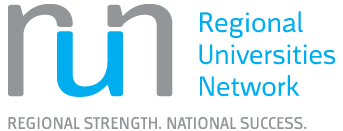Research using faster quantum computing aims to power rails
A CQUniversity researcher will investigate algorithms and quantum computing methods that aim to improve battery performance in trains, thanks to a Queensland Government grant.
Led by the University of Queensland (UQ) as part of the Queensland Quantum Decarbonisation Alliance (QQDA), the project is one of seven new research groups within the QQDA that will span a quantum zero-net emission study to drive decarbonisation across the railway industry.
Titled, Battery performance simulation for rail vehicle design using quantum computing algorithms, the project is being overseen by CQUniversity’s Centre for Railway Engineering (CRE) Chief Investigator Professor Maksym Spiryagin, in partnership with Aurizon.
Prof Spiryagin said the project’s focus would be on optimising battery design and performance for reliability, weight reduction, and cost-effectiveness.
“By incorporating quantum computing to model atomic-level reactions within the battery system, the project aims to improve the selection and development of battery design materials,” Prof Spiryagin explained.
“While traditional simulation methods are computationally inefficient in such complex tasks for the optimisation of battery designs, the combination of digital twin technologies and quantum computing offers a promising solution, as demonstrated by rail-specific research,” he said.
“Considering Aurizon’s commitment as an industry partner to pioneer in zero-emission rail technologies, the project will be primarily focused on the development of a battery performance simulation platform for rail vehicle design tasks using quantum computing algorithms.”
“The simulation platform should not only enhance the overall propulsion system efficiency, but also address critical aspects of rail vehicle design sizing and energy usage and ultimately will inform through life asset costs.”
To reach the project’s research goals, Prof Spiryagin said CRE was relying heavily on a super-powerful computer (HPC), housed at CQUniversity.
“This is the same one the rail researcher used for other big rail digital twin projects. A digital twin is basically a virtual copy of a real-world thing. Running these digital twins and quantum computer simulators together will require a lot of computing power,” he explained.
“Quantum computers aren't super common yet, and we probably won't see many until around 2030-2035. So, using our current HPC supercomputer available at CQUniversity, we can start working on new quantum computer programs now, before they're widely available.
“This gives us a head-start for the future of quantum computing and its practical application for the selection and development of battery design variants and materials.”
Roger Buckley, Fleet Decarbonisation Manager for Aurizon said: "Our long-standing relationship with CQU and our keen interest in the life predictions of batteries as it relates to the total cost of ownership of battery electric locomotive technology is central to our willingness to be part of this exciting program of work," he said.
"We aim to provide data and learnings from our locomotive trials to help validate the CQU degradation models."
The project has received a total of $598,036 in combined funding from the Queensland Government, Aurizon and CQUniversity.
